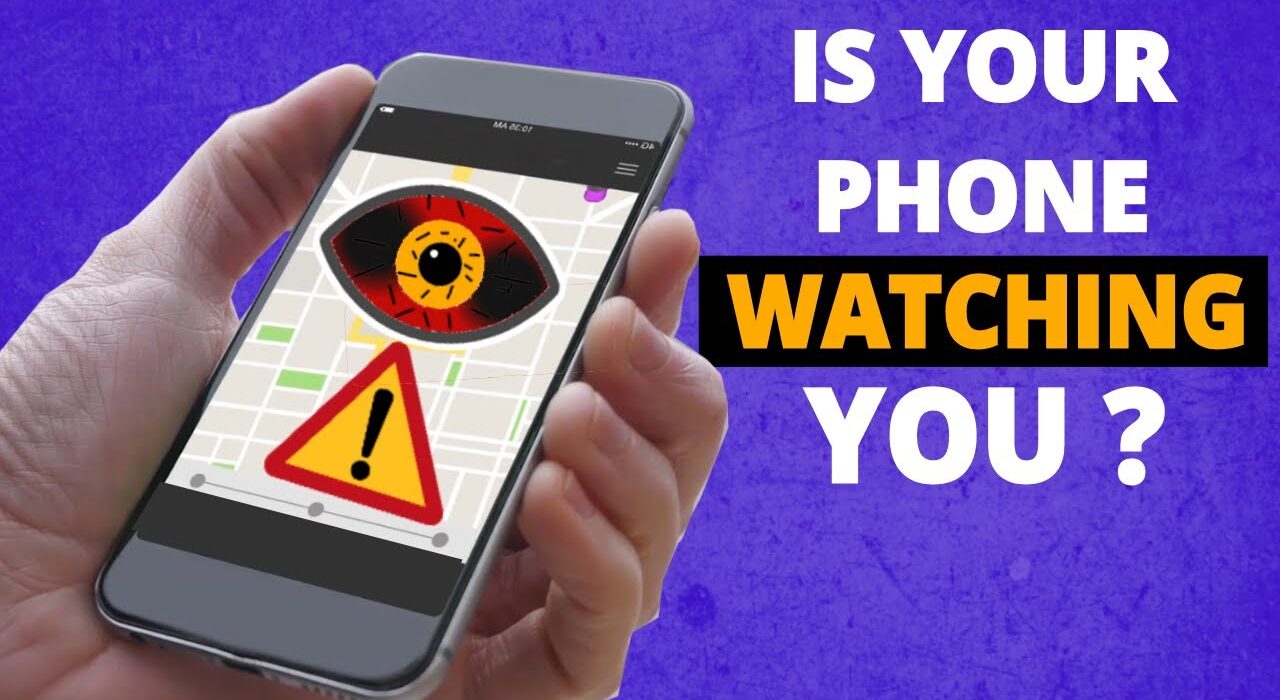How Do I Know If My Phone Is Being Tracked?

Yet, amidst the hustle and bustle of modern life, there are subtle signs that may hint at a more insidious presence lurking within our devices.
From unusual battery drainage to inexplicable spikes in data usage, our phones often betray telltale clues of unwanted tracking. But the quest for answers doesn’t end there. As technology advances, so too do the methods used to monitor and surveil unsuspecting users.
From GPS tracking to spyware hidden within seemingly innocuous apps, the tactics employed by digital stalkers grow increasingly sophisticated.
But fear not, for knowledge is power. By arming ourselves with awareness and understanding, we can reclaim control over our digital lives. In this comprehensive guide, we’ll delve into the myriad ways in which your phone might be compromised, empowering you to detect and thwart potential threats.
Understanding Phone Tracking
Phone tracking encompasses various methods used to monitor and trace the location, activities, and communications of a mobile device. From GPS tracking to software-based surveillance, phone tracking poses significant privacy risks and implications for personal security.
Explaining different methods of phone tracking
Phone tracking methods range from GPS tracking, which utilizes satellites to pinpoint device location, to software-based surveillance, which involves the installation of tracking apps or malware on the device.
Highlighting reasons why someone may want to track a phone
The motivations behind phone tracking can vary widely, from legitimate reasons such as parental monitoring or corporate device management to more nefarious purposes such as stalking, espionage, or theft of sensitive information.
Physical Signs of Phone Tracking
Unusual battery drain and overheating
Excessive battery drain or overheating may indicate the presence of tracking software running in the background, consuming resources and compromising device performance.
Unexpected increase in data usage
An unexplained surge in data usage could be a red flag for tracking activities, as tracking software often requires data transmission to relay information back to the monitoring entity.
Mysterious background noises during calls
Strange background noises, echoes, or interruptions during phone calls may suggest unauthorized access to the device’s microphone, a common tactic used in phone tracking and surveillance.
Software Indicators of Phone Tracking
Unexplained app installations or changes
If you notice unfamiliar apps installed on your device or sudden changes in your existing apps’ behavior, it could be indicative of tracking software being installed or modified without your consent.
Inexplicable pop-ups or notifications
Persistent pop-ups or notifications that appear unrelated to your usual app activity may be a sign of tracking attempts or the presence of malicious software attempting to access your device’s data.

Sudden changes in settings or permissions
Unauthorized modifications to your device’s settings or permissions, particularly those related to location services or data access, could signify tracking attempts or compromised security.
Network Anomalies and Suspicious Activity
Unusual network behavior or connections
Anomalies such as unauthorized network connections, data transfers to unfamiliar servers, or irregular network activity may indicate tracking attempts or unauthorized access to your device’s data.
Frequent dropped calls or poor call quality
Interference or disruptions during calls, including dropped calls or poor call quality, could be symptomatic of tracking software accessing your device’s communication channels.
Strange text messages or emails
Receiving suspicious text messages or emails containing links, attachments, or requests for personal information may be indicative of phishing attempts or tracking efforts aimed at compromising your device’s security.
Monitoring Your Device for Spyware and Malware
Running regular scans for spyware and malware
Utilize reputable antivirus and anti-spyware software to scan your device regularly for signs of malicious software or tracking applications that may have been installed without your knowledge.
Checking for unknown or suspicious apps
Regularly review your list of installed apps and remove any unfamiliar or suspicious applications that may be used for tracking purposes or have been installed without your consent.
Updating software and security patches regularly
Stay proactive in updating your device’s operating system and security patches to mitigate vulnerabilities exploited by tracking software or malicious entities attempting to compromise your device’s security.
Tracking Through GPS and Location Services
Monitoring location settings and permissions
Regularly review and manage your device’s location settings and permissions to prevent unauthorized tracking via GPS or location-based services by apps or entities seeking to monitor your whereabouts.
Checking for GPS tracking apps or software
Conduct periodic checks for GPS tracking apps or software installed on your device, and remove any unauthorized or suspicious applications that may be surreptitiously tracking your location.
Disabling location services when not needed
Minimize the risk of tracking by disabling location services when they are not required for specific apps or functionalities, preventing unauthorized access to your device’s location data.
Examining Battery Usage and Power Consumption
Using battery usage logs to identify tracking apps
Analyze your device’s battery usage logs to identify any apps or processes consuming an unusually high amount of power, which may indicate the presence of tracking software running in the background.
Looking for power-intensive background processes
Monitor your device for power-intensive background processes or activities that could be indicative of tracking activities, such as continuous data uploads or GPS tracking operations.
Investigating unexpected battery drain issues
Address unexpected battery drain issues promptly by investigating the root cause, including the possibility of tracking software draining your device’s resources or compromising its performance.
Reviewing App Permissions and Privacy Settings
Reviewing app permissions and access requests
Regularly review and manage app permissions to limit access to sensitive data and functionalities, reducing the risk of unauthorized tracking or data collection by apps installed on your device.
Restricting permissions for unnecessary apps
Exercise caution when granting permissions to apps and restrict access to functionalities or data that are not essential for their intended purpose, minimizing the attack surface for tracking attempts or data breaches.
Avoiding granting access to sensitive information
Be mindful of the information you share with apps and avoid granting unnecessary access to sensitive personal or device-related data, such as location, contacts, or media files, to mitigate the risk of tracking or privacy breaches.
Performing Device Health Checks
Checking for software updates and security patches
Regularly check for and install software updates and security patches provided by your device manufacturer or software vendors to address known vulnerabilities and security issues exploited by tracking software or malicious entities.
Verifying the integrity of system files and settings
Regularly verify the integrity of your device’s system files and settings to detect and address any unauthorized modifications or tampering indicative of tracking attempts or security breaches.
Ensuring device encryption and data protection measures are active
Enable device encryption and data protection features to safeguard your personal information and prevent unauthorized access by malicious entities attempting to track your device or access your sensitive data.
Conducting Regular Security Audits
Implementing regular security audits for your device
Establish a routine schedule for conducting comprehensive security audits of your device to identify and address potential vulnerabilities, weaknesses, or signs of tracking activity, ensuring the ongoing integrity and security of your device.
Scanning for vulnerabilities and weaknesses
Utilize reputable security scanning tools and techniques to assess your device for vulnerabilities, weaknesses, or potential avenues exploited by tracking software or malicious entities attempting to compromise your device’s security.
Staying informed about the latest security threats and best practices
Stay abreast of the latest security threats, trends, and best practices in the realm of mobile device security and privacy by actively engaging with reputable cybersecurity resources, communities, and news sources.
Seeking Professional Assistance
Consulting with cybersecurity experts or technicians
Seek guidance and assistance from qualified cybersecurity experts or technicians if you suspect your device may be compromised or if you require assistance in addressing tracking attempts, security breaches, or privacy concerns.
Utilizing professional services for device security assessments
Consider enlisting the services of professional cybersecurity firms or consultants to conduct comprehensive device security assessments, identify potential vulnerabilities or tracking attempts, and implement tailored security solutions.
Seeking legal advice if suspicious activity is detected
Consult with legal professionals specializing in privacy and cybersecurity law if you suspect your device has been subjected to tracking or surveillance, and explore legal remedies or recourse available to protect your rights and interests.
Protecting Your Privacy and Security
Implementing strong passwords and PINs
Strengthen your device security by using strong, unique passwords or personal identification numbers (PINs) to prevent unauthorized access to your device or sensitive data in the event of theft or unauthorized access.
Enabling two-factor authentication for added security
Enhance your device security by enabling two-factor authentication (2FA) or multi-factor authentication (MFA) for additional layers of verification and protection against unauthorized access to your accounts and devices.
Avoiding public Wi-Fi networks and using VPNs for secure browsing
Exercise caution when connecting to public Wi-Fi networks and utilize virtual private network (VPN) services to encrypt your internet traffic and protect your online activities from interception or tracking on unsecured networks.
Educating Yourself About Phone Tracking Risks
Understanding the implications of phone tracking on privacy
Educate yourself about the potential risks, consequences, and implications of phone tracking on your privacy, personal security, and digital autonomy in an increasingly connected and surveilled world.
Learning about the legalities and regulations surrounding phone tracking
Familiarize yourself with the relevant laws, regulations, and legal frameworks governing phone tracking, surveillance, and data privacy in your jurisdiction to understand your rights, obligations, and recourse options.
Staying informed about emerging threats and security trends
Stay informed and vigilant about emerging threats, trends, and developments in the field of mobile device security, privacy, and surveillance by actively engaging with reputable cybersecurity resources, news sources, and communities.
Taking Precautions Against Phone Tracking
Being cautious of suspicious links and downloads
Exercise caution when interacting with links, downloads, or attachments from unknown or untrusted sources, as they may contain malicious software or tracking mechanisms designed to compromise your device’s security.
Avoiding sharing sensitive information online or over the phone
Practice discretion and restraint when sharing sensitive personal or financial information online or over the phone, and avoid disclosing unnecessary details or data that could be exploited for tracking or identity theft purposes.
Regularly reviewing privacy settings and permissions
Regularly review and update your device’s privacy settings and permissions to restrict access to sensitive data or functionalities, minimize the risk of tracking attempts, and enhance your overall privacy and security posture.
Securing Your Digital Footprint
Being mindful of the information shared on social media
Exercise caution when sharing personal information, photos, or updates on social media platforms, and consider adjusting your privacy settings to limit the visibility of your posts and activities to trusted contacts only.
Limiting location sharing on social platforms and apps
Minimize the dissemination of your location data by restricting location-sharing settings and permissions on social media platforms and mobile apps to trusted contacts or when necessary.
Using privacy-focused search engines and browsers
Opt for privacy-focused search engines and web browsers that prioritize user privacy, anonymity, and data protection to minimize the collection and tracking of your online activities and preferences.
Creating a Response Plan for Suspected Tracking
Knowing what steps to take if you suspect your phone is being tracked
Familiarize yourself with the appropriate steps and procedures to follow if you suspect your phone may be subjected to tracking or surveillance, including documenting suspicious activity and seeking assistance.
Documenting suspicious activity and reporting it to authorities if necessary
Keep detailed records and documentation of any suspicious activity, signs of tracking, or security breaches observed on your device, and report them to relevant authorities or law enforcement agencies if warranted.
Seeking support from trusted friends, family, or professionals
Seek emotional support, guidance, or assistance from trusted friends, family members, or mental health professionals if you experience distress, anxiety, or uncertainty related to suspected tracking attempts or security breaches.
Raising Awareness About Phone Tracking Risks
Educating others about the dangers of phone tracking
Share knowledge, insights, and resources about the risks and implications of phone tracking with friends, family members, colleagues, and communities to raise awareness and promote proactive measures for privacy and security.
Sharing tips and resources for protecting privacy and security
Empower others to safeguard their privacy and security by sharing practical tips, strategies, and resources for mitigating the risks of phone tracking, surveillance, and unauthorized data collection.
Advocating for stronger privacy regulations and consumer protections
Engage in advocacy efforts and initiatives aimed at promoting stronger privacy regulations, consumer protections, and corporate accountability to safeguard individuals’ rights and freedoms in the digital age.
Conclusion
As technology continues to evolve, so too do the methods used for tracking and surveillance. By understanding the signs and indicators of phone tracking, taking proactive measures to protect your privacy and security, and raising awareness about the risks and implications of tracking, you can empower yourself and others to navigate the digital landscape with confidence and resilience









